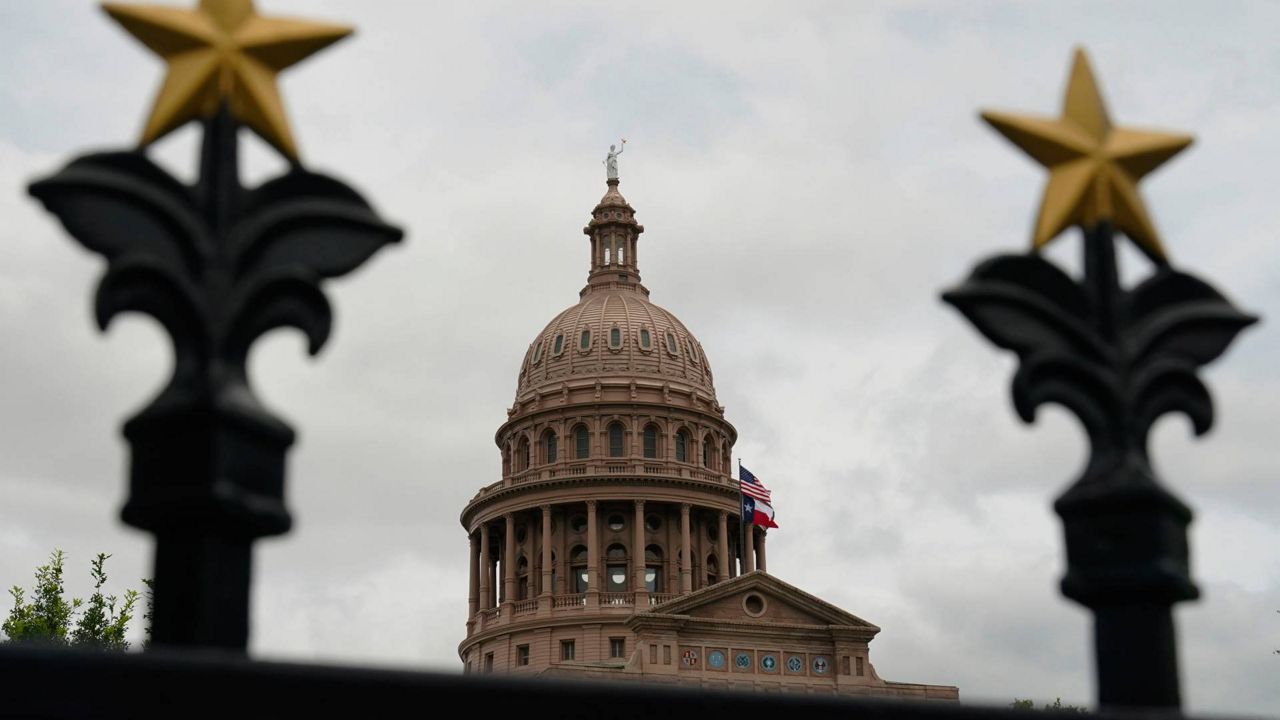North Dakota
Design Taking Shape for North Dakota’s Military History Museum

(North Dakota Monitor) -The new North Dakota Military History Museum will be tall enough to suspend a helicopter or drone. It will incorporate thousands of personal service stories from North Dakota veterans and, according to the state’s adjutant general, represents a “Thank you for your service” from every North Dakotan to the state’s military service members.
The Capitol Grounds Planning Commission voted unanimously this week to approve conceptual designs and the basic floor plan. The step allows project designers to move forward with more detailed construction designs in preparation for an expected groundbreaking in 2025 and scheduled completion in 2027.

Brian Berg, principal architect for Zerr Berg Architects, told the commission the designers tried to keep some uniformity with other structures on the Capitol grounds in the designs for the museum’s exterior that will be attached to the North Dakota Heritage Center.
Craig Peterson, a design architect at BWBR, a design firm working with Zerr Berg, said the new museum’s main entrance will be similar to the entrance to the Heritage Center, which utilizes stone, copper and glass.
The new military gallery will be two levels, Peterson said, and large enough to hang large military vehicles or equipment from the ceiling. The gallery will be an enclosed space with little to no natural sunlight penetrating into the gallery in order to better preserve the items on display, he said.

The military gallery will total about 20,000 square feet, he said, and will equal the size of the Heritage Center’s largest gallery, the Inspiration Gallery. The facility also will include an expanded food service area and outdoor courtyard and amphitheater.
Bill Peterson, director of the State Historical Society of North Dakota, said his staff has collected about 2,000 oral history recordings from North Dakota veterans.
“The exhibits company that we are working with has been fully committed to working with us to develop these stories that highlight the experiences and the lives of real North Dakotans in this gallery space to make it very personal,” Bill Peterson said.
The military museum will showcase a history of Native American military units that will include pre- and post-contact with the United States.
“It will be a very complete story with everybody’s histories included,” he said.

Craig Peterson said the museum designs leave space for the possible additions of an agriculture gallery and structure for large object storage.
Aside from when the North Dakota Legislature is in session, there appears to be ample parking around the campus to accommodate the new museum traffic, Peterson added.
State Rep. Bernie Satrom, R-Jamestown, told the designers he had just visited the National Veterans Memorial and Museum in Columbus, Ohio, and said many of the people he talked to there were proud of their facility that was established in 2018.
“After going through that, I thought, ‘You know what? That’s great, but what we’re doing is going to be so much better,’” Satrom said. He also said he hoped to incorporate the stories of North Dakota veterans into the gallery, similar to Ellis Island in New York.

Berg said the design team is putting together a final preliminary project cost that should be ready in coming weeks.
Bill Peterson told the Legislature’s Budget Section in December the final project cost is estimated to be about $55 million to $60 million. This week, Peterson said the goal is for $30 million to be raised in private fundraising through the National Guard Foundation.
About $400,000 in pledges had been secured for the project as of late July, said Brig. Gen. Jackie Huber, deputy adjutant general.
The Historical Society plans to submit a funding request for the project to be considered in the upcoming legislative session, Bill Peterson said.
A bill in the 2023 session authorized a $20 million line of credit from the Bank of North Dakota that must be paid back. The bill directed the Historical Society to request funding in the 2025 session from Legacy Fund earnings.

During the meeting, Maj. Gen. Alan Dohrmann, adjutant general for the North Dakota National Guard, praised the collaborative effort on the museum project.
“When I look at this project, it’s the state of North Dakota saying, ‘Thank you for your service,’” Dohrmann said. “It’s a tangible sign that we appreciate that less than 1% that raises a right hand to defend the Constitution, up to and including the cost of their own life.”
Commissioner Wendy Van Duyne abstained during the vote on the museum designs due to a conflict of interest involving her employer being involved with the design process.
For more information on the North Dakota Military History Museum, visit the North Dakota Heritage Center and State Museum website.



North Dakota
Audit of North Dakota state auditor finds no issues; review could cost up to $285K • North Dakota Monitor

A long-anticipated performance audit of the North Dakota State Auditor’s Office found no significant issues, consultants told a panel of lawmakers Thursday afternoon.
“Based on the work that we performed, there weren’t any red flags,” Chris Ricchiuto, representing consulting firm Forvis Mazars, said.
The review was commissioned by the 2023 Legislature following complaints from local governments about the cost of the agency’s services.
The firm found that the State Auditor’s Office is following industry standards and laws, and is completing audits in a reasonable amount of time, said Charles Johnson, a director with the firm’s risk advisory services.
“The answer about the audit up front is that we identified four areas where things are working exactly as you expect the state auditor to do,” Johnson told the committee.
The report also found that the agency has implemented some policies to address concerns raised during the 2023 session.
For example, the Auditor’s Office now provides cost estimates to clients before they hire the office for services, Johnson said. The proposals include not-to-exceed clauses, so clients have to agree to any proposed changes.
The State Auditor’s Office also now includes more details on its invoices, so clients have more comprehensive information about what they’re being charged for.
The audit originally was intended to focus on fiscal years 2020 through 2023. However, the firm extended the scope of its analysis to reflect policy changes that the Auditor’s Office implemented after the 2023 fiscal year ended.
State Auditor Josh Gallion told lawmakers the period the audit covers was an unusual time for his agency. The coronavirus pandemic made timely work more difficult for his staff. Moreover, because of the influx of pandemic-related assistance to local governments from the federal government, the State Auditor’s Office’s workload increased significantly.
Gallion said that, other than confirming that the changes the agency has made were worthwhile, he didn’t glean anything significant from the audit.
“The changes had already been implemented,” he said.
Gallion has previously called the audit redundant and unnecessary. When asked Thursday if he thought the audit was a worthwhile use of taxpayer money, Gallion said, “Every audit has value, at the end of the day.”
The report has not been finalized, though the Legislative Audit and Fiscal Review Committee voted to accept it.
Audit of state auditor delayed; Gallion calls it ‘redundant, unnecessary’
“There was no shenanigans, there were no red flags,” Sen. Jerry Klein, R-Fessenden, said at the close of the hearing.
Forvis representatives told lawmakers they plan to finish the report sometime this month.
The contract for the audit is for $285,000.
Johnson said as far as he is aware Forvis has sent bills for a little over $150,000 so far. That doesn’t include the last two months of the company’s work, he said.
The consulting firm sent out surveys to local governments that use the agency’s services.
The top five suggestions for improvements were:
- Communication with clients
- Timeliness
- Helping clients complete forms
- Asking for same information more than once
- Providing more detailed invoices
The top five things respondents thought the agency does well were:
- Understanding of the audit process
- Professionalism
- Willingness to improve
- Attention to detail
- Helpfulness
Johnson said that some of the survey findings should be taken with a “grain of salt.”
“In our work as auditors, we don’t always make people happy doing what we’re supposed to do,” he said.
YOU MAKE OUR WORK POSSIBLE.
GET THE MORNING HEADLINES.
North Dakota
'False promise' or lifesaver? Insulin spending cap returns to North Dakota Legislature

BISMARCK — A bill introduced in the North Dakota House of Representatives could cap out-of-pocket insulin costs for some North Dakotans at $25 per month.
The bill also includes a monthly cap for insulin-related medical supplies of $25.
With insulin costing North Dakota residents billions of dollars each year,
House Bill 1114
would provide relief for people on fully insured plans provided by individual, small and large group employers. People on self-funded plans would not be affected.
“I call insulin liquid gold,” Nina Kritzberger, a 16-year-old Type 1 diabetic from Hillsboro, told lawmakers. “My future depends on this bill.”
HB 1114 builds on
legislation
proposed during the 2023 session that similarly sought to establish spending caps on insulin products.
Before any health insurance mandate is enacted,
state law
requires the proposed changes first be tested on state employee health plans.
As such, the legislation was altered to order the state Public Employees Retirement System, or PERS, to introduce an updated bill based on the implementation of a $25 monthly cap on a smaller scale.
The updated bill — House Bill 1114 — would bring the cap out of PERS oversight and into the North Dakota Insurance Department, which regulates the fully insured market but not the self-insured market.
Employers that provide self-insured health programs use profits to cover claims and fees, acting as their own insurers.
Fully insured plans refer to employers that pay a third-party insurance carrier a fixed premium to cover claims and fees.
“It (the mandate) doesn’t impact the entire insurance market within North Dakota,” PERS Executive Director Rebecca Fricke testified during a Government and Veterans Affairs Committee meeting on Thursday, Jan. 9.
Blue Cross Blue Shield Vice President Megan Hruby told the committee that two-thirds of the provider’s members would not be eligible for the monthly cap, calling the bill a “false promise.”
“We do not make health insurance more affordable by passing coverage mandates, as insurance companies don’t pay for mandates. Policy holders pay for mandates in the form of increased premiums,” Hruby said.
She touted the insurance provider having already placed similar caps on insulin products and said companies should be making those decisions, not the state government.
Sanford Health and the Greater North Dakota Chamber also had representatives testify against the bill.
Advocates for the spending cap said higher premiums are worth lowering the cost of insulin drugs and supplies.
“One of the first things that people ask me about is, ‘Why should I pay for your insulin?’ And my response is, ‘Why should I have to pay for your premiums?’” Danelle Johnson, of Horace, said in her testimony.
If adopted and as written, the spending caps brought by
House Bill 1114
would apply to the North Dakota commercial insurance market and cost the state around $834,000 over the 2025-27 biennium.
According to the 2024 North Dakota diabetes report,
medical fees associated with the condition cost North Dakotans over $306 billion in 2022.
The state has more than 57,200 adults diagnosed with diabetes, and a staggering 38% have prediabetes — a condition where blood sugar levels are high but not high enough to cause Type 2 diabetes.
Nearly half of those people are adults 65 years old or older.
North Dakotan tribal members were also found to be twice as likely to have diabetes compared to their white counterparts.
North Dakota
North Dakota edible bean farmer hosts international visitors to his farm

Building international connections is an important aspect of the agricultural industry.
This year, farmer
Rudy Dotzenrod
hosted visitors from the Big Iron International Visitors Program to his farm to showcase his crops and Reinke irrigation systems.
Jed Brazier / Northarvest Bean Growers Association
“They were looking for a place to kind of showcase some of their swing-arm technology at the end of their pivots,” Dotzenrod said. “I’ve got a couple of them here, so they wanted to come.”
There were visitors from all of the world, including Turkey, Guatemala and Africa.

Ariana Schumacher/Agweek
“We bring in anywhere from 50 to 150 international visitors every year,” said Lindsey Warner, deputy director of the North Dakota Trade Office. “The goal of that is, first and foremost, have agriculture machinery buyers learn more about North Dakota, our agriculture, our agriculture practices, the machinery that’s manufactured here.”
They got to see every part of the farming operation.
“I took a lot of them, and we walked around the farm, we went to different buildings and we looked at all sorts of different kinds of machinery, you know, from getting the ground ready, to planting, to spraying it, to harvesting it, just kind of looked at everything,” Dotzenrod said.
With Dotzenrod also being a black bean grower, that was beneficial to the visitors from Guatemala.
“They were very interested in irrigation and black beans,” Warner said.

Jed Brazier / Northarvest Bean Growers Association
However, most were interested in his corn production.
“I was kind of surprised, I thought there may be a few more questions on edible beans, but it was mostly in corn,” Dotzenrod said.
Bringing international visitors directly onto the farm is a big part of the tour.
“We live in a global world. A lot of the commodities that are produced within our state are exported outside of the U.S., so I think it’s really beneficial for people to see where their food is coming from, whether they are North Dakotas or they are international consumers of these products” Warner said.
“People kind of want to know where their food is coming from, you know, and if they can try and put a face on that or an environment, that gives them a better understanding of where it’s at,” Dotzenrod said. “A lot of this is beyond the economics of it. It’s relationship based. If they feel like they’re buying something from somebody they like, I think it makes it a lot easier for them to go ahead and do that.”
-

 Business1 week ago
Business1 week agoThese are the top 7 issues facing the struggling restaurant industry in 2025
-

 Culture1 week ago
Culture1 week agoThe 25 worst losses in college football history, including Baylor’s 2024 entry at Colorado
-

 Sports1 week ago
Sports1 week agoThe top out-of-contract players available as free transfers: Kimmich, De Bruyne, Van Dijk…
-

 Politics1 week ago
Politics1 week agoNew Orleans attacker had 'remote detonator' for explosives in French Quarter, Biden says
-

 Politics1 week ago
Politics1 week agoCarter's judicial picks reshaped the federal bench across the country
-

 Politics5 days ago
Politics5 days agoWho Are the Recipients of the Presidential Medal of Freedom?
-

 Health4 days ago
Health4 days agoOzempic ‘microdosing’ is the new weight-loss trend: Should you try it?
-

 World1 week ago
World1 week agoIvory Coast says French troops to leave country after decades
















